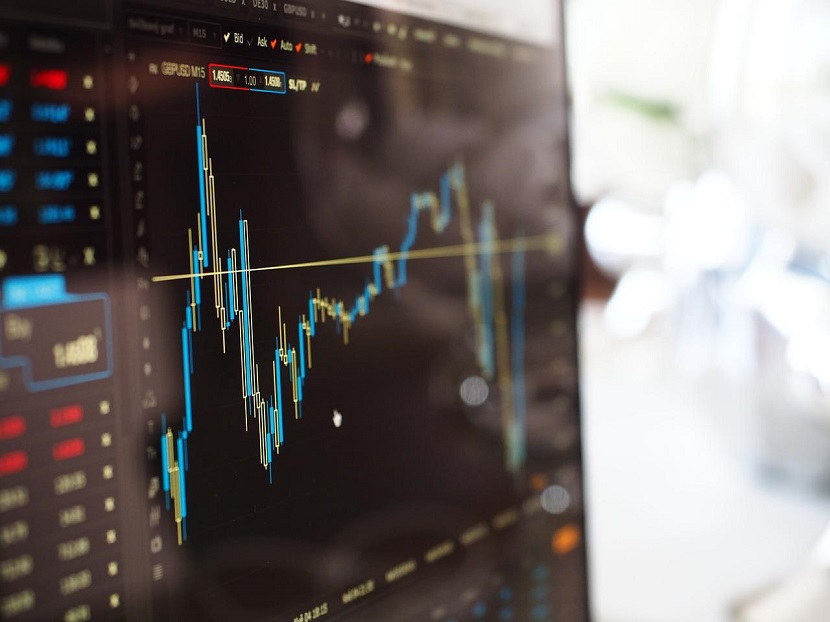An ETF passive investing or passive exchange-traded fund (ETF) is a financial product that attempts to imitate the performance of the overall stock market or a particular sector or trend. Passive ETFs replicate the holdings of a specified index. So, it would be a collection of tradable assets thought to be indicative of a market or segment. Similarly to equities on a major exchange, investors may purchase and sell passive ETFs throughout the day.

How does ETF passive investing work?
Components of a passive ETF track the underlying index or sector and are not subject to fund management discretion. This makes it the antithesis of active management, which is a strategy in which an individual or team decides the underlying portfolio allocation in an effort to outperform the market.
Compared to active funds, passive ETFs provide investors greater freedom to implement a buy-and-hold strategy. Advocates of passive investment feel that it is difficult to beat the market, thus they try to equal the market’s total performance.
As a result of taking a hands-off approach, the provider may charge investors less without having to account for personnel wages, brokerage costs, and research. The plan also emphasizes the advantage of reduced turnover. When assets enter and exit a fund at a slower rate, transaction costs and realized capital gains are reduced. Therefore, investors can save money while filing taxes.
Additionally, passive ETFs are more transparent than actively managed ETFs. Daily publication of fund weightings by providers of passive ETFs enables investors to prevent strategy drift and uncover duplicate holdings.
Investing in passive ETFs is cheaper
In many instances, investors pay around 0.75 percent annually for actively managed funds. In comparison, some passive funds carry annual expenses of less than 0.1%.
The difference between the statistics may look little, but their influence on your returns over time might be substantial. Consider the following scenario, keeping in mind that these numbers are based on a simplified example and are provided for illustrative purposes only — consistent returns over an extended period of time are extremely improbable.
Suppose you deposited $10,000 lump money in a passive fund yielding 0.1% annually. If you see annual increase of 4%, your initial investment would be worth $21,493 after 20 years.
After fees, the same money put in an actively managed fund with a 0.75 percent annual charge would only rise to $18,959 over the same time period. This is a difference of over $3,000 due to the cost alone.

Active funds versus passive funds
Funds that only monitor an index will always underperform the market, according to critics of passive investing. Active managers, in contrast, might possibly outperform the market by carefully selecting the companies they own.
Additionally, it is widely believed that passive techniques cannot protect investors during moments of market volatility. Ultimately, if the market that a specific fund is monitoring declines, so will the value of the portfolio.
However, proponents of passive investment contend that many active fund managers cannot consistently outperform the market over the long run. And it is incredibly difficult to identify those who will, given a manager’s previous success is never indicative of their future returns.
Even Warren Buffett, the most famous stock picker in the world and CEO of Berkshire Hathaway, has lauded passive investing in the past.
The established markets such as the United States and the United Kingdom are so well-researched. Therefore, it is particularly difficult for managers to identify possibilities that others have missed. It means, that selecting a passive fund may be preferable. In contrast, places that are less well-known, such as developing markets, are often the topic of far less research. In these regions, markets tend to be less efficient, and many have proposed that the specialized knowledge and experience of a fund manager might be advantageous in the search for attractive assets.

Smarter ETF passive investing
The evolution of passive investment continues. Many fund companies now offer smart-beta or strategic beta ETFs. These products try to bridge the gap between active and passive investing through the use of advanced stock-picking algorithms. They use alternative index creation, as well, all while maintaining low expenses.
Most benchmark indices, such as the FTSE 100, employ a market-cap weighted methodology. It means that the index consists of the 100 biggest UK-listed companies. However, a smart beta fund concentrating on the blue-chip index will apply alternative criteria, such as tracking stocks based on their dividend yield.
While the lengthy debate between the two approaches continues, it might be argued that the point is being lost. Although passive investing should be the first priority for investors creating a portfolio from beginning, both techniques have their place.
The bottom line
Both active and passive management are viable and popular investing techniques among ETF investors. While actively managed ETFs managed by professional money managers are still limited, you can expect that forward-thinking investment businesses are working hard to solve the hurdles of making this product available globally.



